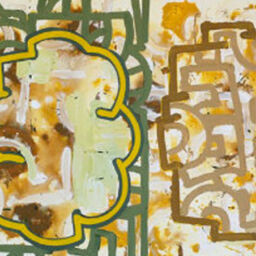
Getting Beyond ‘Inner’ and ‘Outer’
Adam Frey, December 11, 2012

I’ve also heard the direction of a psyche’s energy—Jung’s first insight into type difference—described as internal versus external, or interior versus exterior, usually with a hint of panic and frustration in the teacher’s voice. But what, after all, is exterior thinking?
At a safe distance from any classroom, I can take ironic delight in the paradox of how regularly I use Jung’s type model to make sense of the world, and yet how challenging I find it to discriminate the two attitudes in simple words. I’ve heard people say that there aren’t that many words to describe smells because olfaction is processed by a relatively nonverbal part of the brain. Maybe Jung’s ‘attitudes’ are so fundamental and primitive that they operate at a nonverbal level as well.
After studying types for twenty-five or thirty years, I do, sometimes, know how it feels in my body to do extraverted thinking (Te) or introverted intuition (Ni) or extraverted feeling (Fe)—and how it feels to encounter these processes in others. Each comes with its own sensations. My facial expressions change as I move between functions. Different parts tense up or relax. But is that an interior experience, or is it part of the way I dialogue with things that are, at bottom, outside me?
Naturally, I do call on verbal formulas sometimes as I try to figure out a person’s type. If someone says, “Look! What are we trying to achieve here?” I recognize that as a use of extraverted thinking, because I know that extraverted thinking is focused on goals and plans. But I have to confess that my recognition of the function is aided by that place in my mid-chest that always tenses up when extraverted thinking seizes the reins. My mid-chest is also where my heart is, affected by what is happening in a world outside my body.
Many people in the type movement have said that Jung’s eight functions would be easier to teach if they were given eight separate names, rather than being identified as four functions with two attitudes each. Extraverted feeling, empathic toward all the people who have struggled to understand the eight functions, sees the value in that idea, but introverted thinking (Ti), brandishing a sword, cries “No!”
I think Jung got it right. Four functions. Two attitudes.
So how did Jung explain the attitude difference? As the relation of subject to object. As the tendency to be subjective or objective. I’ve watched the dazed faces in the room when attitude type is taught using those terms. Trying to make people conscious of when they are being objective or subjective is not only semantically confusing, it insults the intelligence of the types of consciousness they typically use.

Extraverted sensation (Se) recognizes realities that others in the public could also, conceivably, identify. Romney did that in the first debate, and with an attention to the public moment that made him appear far more ‘present’ than Obama. Extraverted functions stay engaged with the stimulus in accord with shared standards. So Romney, much more than Obama, appeared to be with the public audience.
Introverted functions want to withdraw and interrogate their impression of the stimulus based on a personal interpretation of archetypal standards, but the introverted functions don’t operate exclusively in inner space. My guess is that Obama’s introverted thinking was remembering how the moderator, Jim Lehrer, had defined what the debate was supposed to do, and also was engaging with an imagined public of analytical thinkers who, scrutinizing his every word, would ask themselves: “Is that really true? Do things really work the way he is saying?” And of course, for both candidates, I’m sure other functions were in play as well.
In certain branches of psychology—and even philosophy—we are invited to call on a related dichotomy: Self and Other. When I see that word Other with its ominous, bloated capital O, I imagine myself alone on a city street encountering a big, oval blob from outer space that is taking up most of the sidewalk. The Other. It’s a looming thing you can’t control—a thing that has a mind of its own and will almost certainly cause you trouble. This species of fantastic perception is doubtless what prompted Jung to write that the introverted sensation type “lives in a mythological world” (Psychological Types, para. 653).
An extraverted function is one that can engage with the Other without retreating. Those who thought Romney won the first debate probably meant that he didn’t blink, didn’t turn away. He knew how to stay connected even as he challenged the President’s record.
Staying engaged with an object can be hard for me. When I first brought home the laptop I’m writing this on, my relation to it was through extraverted sensation. I had to study this weird, new entity, trying to keenly observe every part of it. Extraverted sensation exhausts me, so I could only stand to look at it for a minute or two at a time. My introverted sensation preferred to pull back and question my impression of the laptop in a space that is private even from things. “Is that thing really what it purports to be? How does it compare to things in the same category that I’ve seen before?” Now that I’ve had the laptop for six years, it has become part of my introverted space—an extension of my fingertips. My relation to it, nearly all the time now, remains in the realm of introverted sensation. Yet I am joining with the object. Except when it malfunctions in some inexplicable way, the laptop seems more me than not-me.

I welcome thoughts and ideas from readers about this. How do you explain extraverted and introverted when you are describing the attitudes directing the different functions? Or, if that’s too public a question, what is your personal conviction as to where the difference lies?
Header Image
Henri Matisse, Woman Before An Aquarium, 1921

















